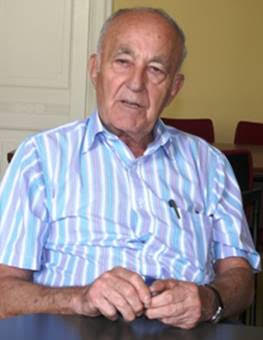
THE VOICE OF INTERNATIONAL LITHUANIA
|
VilNews has its own Google archive! Type a word in the above search box to find any article.
You can also follow us on Facebook. We have two different pages. Click to open and join.
|
Lithuania today
Lithuania’s best future lies in a Nordic union
- Posted by - (3) Comment
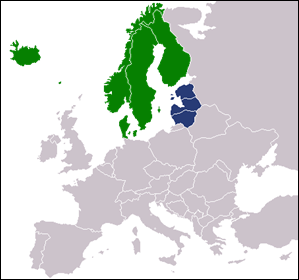
New collaboration constellations are forming in our today’s Europe. The potential new alliance between France, Germany, Poland and Russia is an example of that.
This new approach, between countries that previously were relatively far apart, as well as the so-called G-8 and G-20 alliances between the world’s richest countries are examples of how we seem to be moving into a new World Order. Also in good old Europe we are now beginning to develop entirely new constellations.
Typical of such constellations is that the largest and richest countries take initiatives to secure their own positions and welfare, while smaller countries often have to put up with playing second fiddle.
What the three Baltic States now face is that being members of the EU is not enough. The economic crisis, and partly also questions on defence and security, have led to new forms of cooperation, as the aforementioned , and our small nations far north in Europe are not invited to become active participants.
It is therefore my opinion that a tight collaboration with the other Nordic countries is the way to go. Together we are large and powerful enough to be heard, and our common identity and cultural background is a good basis for cooperation.
In the 13th century, an alliance of Northern European towns called the Hanseatic League created what historian Fernand Braudel called a “common civilization created by trading.” Today’s expanded list of Hansa states share Germanic and Scandinavian cultural roots. Germany and the Scandinavian countries have found their niches by selling high-value goods to developed nations, as well as to burgeoning markets in Russia, China, and India.
Widely admired for their generous welfare systems, Denmark, Finland, Norway, Sweden and Germany have liberalized their economies in recent years. They account for six of the top eight countries on the Legatum Prosperity Index and boast some of the world’s highest savings rates (25 percent or more), as well as impressive levels of employment, education, and technological innovation.
“In strategies that we are developing for the next twenty years emphasize that it is important for the Baltic States to become more harmonized and catch up with Scandinavian countries. Integration with Nordic countries is an important objective,” said Andrius Kubilius, Lithuania’s prime minister, in a meeting in Tallinn a few days ago..
I think he is right.
Aage Myhre, Editor-in-Chief
- Bookmark :
- Digg
- del.icio.us
- Stumbleupon
- Redit it
Intolerance in today’s Lithuania
- Posted by - (0) Comment
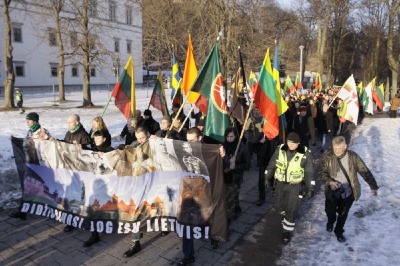
Neo-Nazis marching in Vilnius during
Lithuania’s Independence Day, 11 March 2011.
Photo: http://holocaustinthebaltics.com
Intolerance, racism, anti-Semitism, xenophobia and homophobia. These are words and terms we unfortunately have heard and seen far too often in Lithuanian media in recent years.
This country that for hundreds of years was a thriving cradle for co-existence between people from many nations, cultures and religions. Or, as the British historian Norman Davies puts it: “Lithuania was a haven of tolerance”. Davies was not the only one who took notice of this. Erasmus of Rotterdam (1466 – 1536) is quoted as stating; “I congratulate this nation [Lithuania] which now, in sciences, jurisprudence, morals, and religion, and in all that separates us from barbarism, is so flourishing that it can rival the first and most glorious of nations.”
But no longer so. Today’s Lithuania faces several forms and manifestations of intolerance. According to B.O. Dittrich (2007), Lithuania is the most homophobic of all the EU countries. In 2000 a survey conducted by European Value Study Group showed that the level of xenophobia in Lithuania is one of the highest in Europe. For example, as much as 23% of Lithuanians would not like to be neighbours with Jews (with Russians – 14, Estonians – 11.2%, Latvians – 5.2%, Germans – 5.2%, Swedes – 2.1%).
Attitude towards immigrants is as bad – 22.7% of Lithuanians would not like to be neighbours with immigrants, 94.2% believe that they should get a job before the immigrants, 55.2% do not think that our country should accept refugees, and as much as 58% of Lithuanians do not trust foreign companies.
During the spring of this year we have seen neo-Nazis marching through Vilnius on Lithuania’s Independence Day, we have seen the neo-Nazis hoisting swastika flags on the nation’s official flag poles, and we have seen lawmakers in the country’s Committee on Legal Affairs vote to make even more stringent censorship legislation for homosexuals, saying that they should be able to fine people for the "propagation of homosexual relations" in public.
This has earned condemnation from EU groups, but the European commission scarcely dares to take action when member states disregard with what West Europe consider fundamental rights for its people. For example, when the law that bans the “promotion of homosexuality”, little was heard from the EU.
Reactions from Lithuanian leaders against this worrisome trend has unfortunately also been relatively vague, although there are signs that some finally begin to wake up. But there are still some politicians who seem to breed homophobia and racism in this country.
VilNews will for some time focus on the problem of intolerance, and we do hereby open up for serious posts, interviews and articles on this theme. We begin today with an interview with Professor Irena Veisaite (below) and we urge you, dear readers, to write to us with your own thoughts and reflections.
Maybe one day we will again be able call Lithuania ‘A Haven of Tolerance’…
- Bookmark :
- Digg
- del.icio.us
- Stumbleupon
- Redit it
“There is always something growing”
- Posted by - (1) Comment
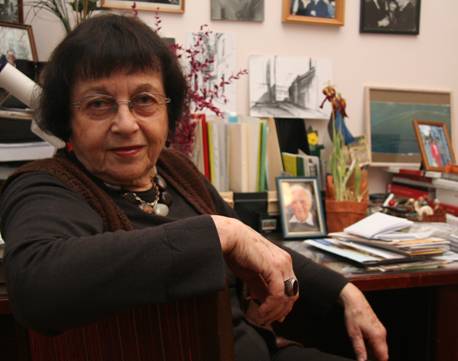
Professor Irena Veisaite
An Interview of Irena Veisaite
by Ellen Cassedy
April 26, 2011
Irena, you are a Holocaust survivor and have long been involved in Holocaust education initiatives in Lithuania. What do people outside Lithuania need to know about intolerance inside Lithuania today?
Of course there are examples of intolerance in Lithuania. All over the world there is intolerance. But there are also many attempts to promote tolerance in Lithuania. You should not always see only the negative side. We must appreciate positive steps as well.
What about the neo-Nazi march in Vilnius on March 11, independence day, and the swastika flags and anti-Semitic banner that appeared on Hitler’s birthday?
It is upsetting that this happened and that some young people joined that march. But it is also worth noting that both government and society at large reacted in protest against these incidents.
Lithuania’s foreign ministry and the Speaker of the Seimas, Dr. Irena
Degutiene, reacted strongly against the anti-Semitic outbreaks on the
day of Hitler's birthday. The reaction against the march on March 11
was not as strong and as far as I remember, it was mainly Kubilius who
reacted.
There is always something growing. This makes me hopeful.
What is being done to promote tolerance in Lithuania, and what more
should be done?
A great deal is being done. In a short interview it is impossible to
mention everything. Just a few examples: When Lithuania declared its
independence in 1990, there was almost nothing on this topic. Now we
have about 60 books researching the terribly painful history of the
end of Litvak history and culture in Lithuania. We have three books
about the Roma Holocaust in the country. Our textbooks are changing
toward openness and tolerance to Lithuania’s minorities, though they
are not yet perfect. We’re educating our teachers, with the help of
the US Holocaust Memorial Museum.
We also have many very active Educational Centers all over the country
which are teaching the history of the Holocaust. A wonderful, modern
exhibition has opened in the Museum of Tolerance in Vilnius Our
government has designated 2011 as the Year of Holocaust Remembrance in
Lithuania. Many events, discussions, conferences on this painful issue
are planned.
For young people all over the world, the Holocaust is so remote that
they can barely imagine it could happen. But we all need to learn
about the Holocaust, not only because of the terrible things that
happened, but because we need to understand that every one of us could
in certain circumstances become a perpetrator. Every day we see how
people are manipulated, how people are infected with hatred. As the
famous Polish-British sociologist Zygmunt Bauman has stated in his
book, Modernity and the Holocaust," the Holocaust is not a specific
Jewish problem; it is a problem of modern society as a whole.
When we speak about the Holocaust in Lithuania or other Eastern
European countries to people who also experienced the Gulag, we can’t
ignore their experience. If we want to work toward mutual
understanding, we must not become rivals as to who’s a bigger victim ,
but respect any victim of mass murder.
You have spoken of the need for "intolerance of intolerance." Can you
explain?
No doubt. we should be intolerant of intolerance whenever and wherever
it occurs. And we have first of all to apply it to ourselves. We can’t
tolerate corruption, coercion, violence, etc. We have to fight it, but
never overstep the border of tolerance. People are brought up
differently, they live in different cultures and traditions, they have
different experiences and therefore they can have different opinions
and feelings, which have to be tolerated.
What can people outside of Lithuania do to help promote tolerance in
Lithuania?
People from outside Lithuania should be very careful about
interfering. They can speak of their own experience, but when a person
from outside any country comes to teach local people how to act, you
have to know the local situation very well and find the right way to
speak. You must have tact. You have to understand the education
people received, and their experiences. Otherwise you will face
unexpected consequences.
Only one little example. In February, I attended a conference in
London called “No Simple Stories,” which brought together well-known
historians from the US, Israel, Germany, England, and Lithuania. We
examined Jewish-Lithuanian relations – the years of coexistence and the
years of violence. It was wonderful, very open and very honest. But at
the end came a professor from outside with two cameraman, who read a
statement which insulted all participants, accusing them in hiding the
truth about the Holocaust in Lithuania. Such declarations don’t help,
they only create bad blood and make a fair dialogue impossible.
Professor Irena Veisaite was a founder of the Open Society Fund –
Lithuania and is now ombudsman of the Open Society Institute. For the
past 15 years, she has participated in Holocaust education initiatives
in Lithuania. She has been honored by the Lithuanian government with
the Gediminas Order. The Sugihara Foundation nominated her as the
Person of Tolerance in 2002. She lives in Vilnius.
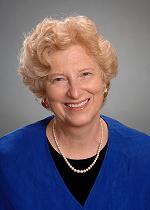 |
Ellen Cassedy traces her Jewish family roots to Rokiskis and Siauliai. Her book, "We Are Here: Memories of the Lithuanian Holocaust," will be published in March of 2012. She lives in Washington, D.C. Visit her website at www.ellencassedy.com. |
- Bookmark :
- Digg
- del.icio.us
- Stumbleupon
- Redit it
By Yves Plasseraud, Paris
A series of painful and worrying events (Stankeras holocaust denial, Vilnius neo-nazi parade, desacration of the 9th Fort Memorial… the list is sadly long) have recently drawn the attention of Western intellectual and journalists towards what seems to be a substantial increase of antisemitism in Lithuania. The name of Lithuania, associated for centuries (during the period of the Grand Duchy of Lithuania particularly) with the idea of tolerance and social peace, is now more and more being seen as synonym of antisemitism, racism, xenophobia and, another field, homophobia. For many observers, Lithuania is now leading the group of “small” countries where human Rights principles appear forgotten !
There is obviously some exaggeration in this perception, but the recent evolution of Lithuania’s public opinion remains indeed worrying. What happened to this country ? Let’s first try to determine if there are specific causes in the Lithuanian case, and, in the affirmative, what is their nature.
It does not seem to be the experience of World War Two of extensive collaboration with the Nazis and participation to the Holocaust. Countries like Latvia, Moldova or Ukraine share the same terrible memories. It can hardly be the current xenophobia, it is much worse in a country like neighboring Russia. Obliteration of the Holocaust responsibilities seems more obvious in Latvia or in Moldova than in Lithuania. In these conditions, what can be the specificity of the Lithuanian problem?
A systematical scrutiny of the situation points to two series of causes to this disturbing Lithuanian current evolution.
Those which are common to all post-communist States
If we look at post communist European societies, we observe that all of them are, to various degrees, infested by prejudice and social aggressivity. The wars in Yugoslavia and in the Caucasus in the ‘90 frightened rightfully the West. The international situation has now cooled down in these areas, but let us think about the anti-Roma “rage” in the former Czechoslovakian space, the anti- Tchiorni pogroms in Russia or the antagonisms between Hungarians and Slovaks, just to name a few hot cases. These antagonisms have long roots in the past, which usually can easily be traced back.
When communism collapsed in Europe in 1991, most of the pre-1945 ideas, prejudices and hatreds, “frozen” by the brutal communization came back to the surface. Among these ideologies of the late thirties, xenophobia, antisemitism (Nazi, but also to a certain extent Soviet antisemitism) and racism were not the least. All the intellectual, moral and social work done in Western Europe during these some 50 years, which, inhibited in “Eastern Europe” by the communist ideology, had not taken place, had to be suddenly undertaken. This was to be started almost from scratch and in a great mental confusion, particularly in view of the fact that the Western paradigm proved itself very different from the image it had – seen from outside – given until then.
In this matter, the current Lithuanian Republic does not differ from its neighbors and suffers from the same trauma.
One more element can be identified. All the social work done by NGO’s in the last 20 years on behalf of Europe (CoE, OSCE and EC) around the concept of national minorities have indirectly lead to a greater consciousness of the groups and subsequently to a kind of re-ethnicization of the society. The difference between “us” and “them” has thus considerably increased.
Causes which seem to be more specific to Lithuania
Several Lithuanian specificities can be identified.
• Major Societal discomfort: Several signs map this situation such as the high rate of suicides (the worst in Europe), the generalized pessimism and the traditional Lithuanian taste for self – depreciation combined with ethno-nationalism.
• Consciousness gap between the intellectual and political elites (often conscious but limited in number) and the rest of the population. More than elsewhere, these “elites” are largely discredited, or at least, not taken seriously !
• Absence of a clear image of what their country is really in the public opinion. Between the cherished image of the pre
• 1795 Grand Duchy, the peasant “ethnic” Republic of Smetona, the Soviet Lithuanian Republic and the current post-soviet State, the images and representations seldom match.
The consequence is a great degree of social anxiety – intensified by the current economic crisis and subsequent massive immigration. In such a context heterophobia and consequently the search for scapegoats and all what goes with it, is unfortunately a frequent reaction.
What can be done by the West to improve the situation?
The aim of the Western observers should be to help reconcile the people with itself and to make the different images of the country readable and coherent in the eyes of the average Lithuanian.
Recognizing the progresses and the efforts made (they are indeed numerous, and the authorities play their part !) is certainly the best way to make the justified critics receivable by the Lithuanian public.
We should also make our best to help the Lithuanian liberal intellectuals who are promoting the ideas of tolerance. In the Lithuanian case, they appear to be mostly social workers and academics (often working in Vytautas Magnus University in Kaunas, but of course not only) and often, in one way or another, related to the American born Santara Sviesa current of thought.
It is obviously through a more intensive Europeanization that the country of the White Knight will be able to chase its devils and fully integrate in the European Community.
- Bookmark :
- Digg
- del.icio.us
- Stumbleupon
- Redit it
QUOTE: Prophet Muhammad (570-632)

Without that I knew about it had my 4-year-old daughter made this drawing,
almost a month after she and I had seen on CNN how the planes crashed
into the twin towers in New York on 11 September 2001.
11 SEPTEMBER 2001: I had just come home to our apartment here in Vilnius after having brought my then 4-year-old daughter home from kindergarten. She was playing on the floor beside me while I sat down to watch the latest world news on CNN. What I saw on the screen in front of me was so unreal that I first could not believe that this was real news. My first thought was that CNN was showing fragments of a new film or the like. But it soon dawned on me that what I was seeing was the beginning of an unimaginable attack and a tragedy that would forever change our world's history and development.
11 September 2001 was the day when America was attacked on its own soil. The unthinkable had happened.
Today, 2 May 2011, Osama bin Laden was killed in Pakistan by US special troops.
The almost ten years that have followed since that September day in 2001, have brought enormous changes, not only in the U.S., but to the entire world. The war against terrorism, the war in Afghanistan, the war in Iraq, the new Arab revolts, and countless suicide attacks across virtually the entire world have all become symbols of our time -- in a way few of us could have imagined when the new millennium had barely started.
Lithuania has been little influenced by the 'war on terror'. Admittedly, the country is participating with troops in Afghanistan and it also became an almost-scandal when it became known that the CIA had two prisons for suspected terrorists here since 2005.
But even if Lithuania is not so much directly affected by what has happened around the world after the attack on the twin towers in New York on 11 September 2001, this country is also a part of a global society that is both physically and mentally experiencing enormous repercussions.
I have often asked myself: "What kind of world is it our children have to grow up in post-9/11? The daily traumas inflicted to the children in the two countries that have been hardest hit, Iraq and Afghanistan, are naturally the worst and most long-term harmful, but our children in the so-called free world have undoubtedly also been influenced by what happened and they will for many years have to experience the consequences in many different ways.
I was not aware that my little daughter saw what took place on the TV screen this September day ten years ago, so I must admit I was slightly shocked and shaken when she suddenly, a month later, came to give me a drawing she had made. The image of 'a plane flying into the tall tower' had been instilled in the child brain, and here she came to me with her visualisation of what she had seen and experienced in her thoughts when I thought she was quietly playing, occupied in her own childish world.
It goes without saying that we, the adults, need to help children feel as safe as possible at a time when the world has become a more dangerous place. Parents and teachers in particular should help youngsters understand current events factually, how events do or do not impact their lives, and how to handle their emotional reactions. All children are likely to be affected in some way by ‘the age of terrorism’.
For many of our children, the guidance of caring adults will make the difference between being overwhelmed and developing life-long emotional and psychological coping skills. It is crucial to provide opportunity for children to discuss their concerns and to help them separate real from imagined fears.
The lessons of 11 September 2001 are many. Some ‘contribute’ by burning the Quran. Others work for reconciliation and understanding between the people of our fragile little planet.
Hopefully the lesson of 2 May 2011 will be a peaceful one.
Aage Myhre
Editor
- Bookmark :
- Digg
- del.icio.us
- Stumbleupon
- Redit it
Prophet Muhammad
- Posted by - (2) Comment

Birth of the Prophet Muhammad
(Iranian illustration)
Muhammad was born around the year 570 in the city of Mecca, Arabia. His name means "highly praised." Muhammad's full name was Abu al-Qasim Muhammad Ibn Abd Allah Ibn Abd al-Muttalib Ibn Hashim. He was the last prophet of the religion of Islam.
Muhammad's father, Abdallah, died several weeks before his birth and his mother, Aminah, died when he was six years old. He was raised by his paternal grandfather, 'Abd al Muttalib, until the age of eight, and after his grandfather's death by Abu Talib, his paternal uncle. Under the guardianship of Abu Talib, Muhammad began to earn a living as a businessman and a trader.
The tradition of Islam claims that in the year 610, Muhammad, while on a retreat to Mount Hira for meditation during the month of Ramadan, received his first revelation from the Archangel Gabriel. Gabriel said to Muhammad: "Iqraa," meaning "read" or "recite." He replied, "I cannot read." Gabriel embraced Muhammad and after releasing him repeated: "Iqraa." Muhammad's answer was the same as before. Gabriel repeated the embrace, asking Muhammad to repeat after him and said: "Recite in the name of your Lord who created! He created man from that which clings. Recite; and thy Lord is most Bountiful, He who has taught by the pen, taught man what he knew not."
The Angel Gabriel visited the Muhammad many times over a period of twenty-three years. Gabriel taught Muhammad the verses and he instructed his scribes to record them. All the revealed verses are compiled in the Qur'an. The Prophet's sayings and actions are recorded separately in collections known as Hadith. Muslims believe that Muhammad was a messenger of Allah (Arabic for The One and Only God) and last of the prophets sent by Allah to guide man to the right path.
The Prophet's mission was to restore the worship of the One True God, the creator and sustainer of the universe, as taught by Prophet Abraham and all Prophets of God, and to demonstrate the laws of moral, ethical, legal, and social conduct. Islam means peace by submission and obedience to the Will and Commandments of God. Those who accept Islam are called Muslims, meaning those who have accepted the message of peace by submission to God.
- Bookmark :
- Digg
- del.icio.us
- Stumbleupon
- Redit it
Obama’s Cairo speech
- Posted by - (1) Comment
CAIRO 4 JUNE 2009: Quoting from the Quran for emphasis, President Barack Obama called for a "new beginning between the United States and Muslims" in his famous Cairo Speech the 4th of June 2009. He said that, together, they could confront violent extremism across the globe and advance the timeless search for peace in the Middle East.
"This cycle of suspicion and discord must end," Obama said in a widely anticipated speech in one of the world's largest Muslim countries, an address designed to reframe relations after the terrorist attacks of Sept. 11, 2001, and the U.S.-led war in Iraq.
The White House said Obama's speech contained no new policy proposals on the Middle East. He said American ties with Israel are unbreakable, yet issued a firm, evenhanded call to the Jewish state and Palestinians alike to live up to their international obligations.
In a gesture to the Islamic world, Obama conceded at the beginning of his remarks that tension "has been fed by colonialism that denied rights and opportunities to many Muslims, and a Cold War in which Muslim-majority countries were often treated as proxies without regard to their own aspirations."
"And I consider it part of my responsibility as president of the United States to fight against negative stereotypes of Islam wherever they appear," said the president, who recalled hearing prayer calls of "azaan" at dawn and dusk while living in Indonesia as a boy.
At the same time, he said the same principle must apply in reverse. "Just as Muslims do not fit a crude stereotype, America is not the crude stereotype of a self-interested empire."
Notably, Obama made an emotional plea for the right of Palestinians to live in dignity in an independent state of their own. He even used the term "Palestine," in a break from standard references to a future Palestinian state.
Obama also became the first U.S. president to admit the U.S. role in the 1953 CIA-led coup of Iran's elected prime minister Mohammed Mossadegh, the Washington Times reports. "In the middle of the Cold War, the United States played a role in the overthrow of a democratically-elected Iranian government," he said, alluding to the coup.
The speech was the longest of his presidency thus far, clocking in at 55 minutes. His speech was interrupted by applause over a dozen times.
Obama's remarks were televised on all radio and television stations in Israel, and with Arabic voice-over translations by Arab satellite stations Al-Arabiya and Al-Jazeera, Egyptian TV and Al-Manar, an outlet for the militant group Hezbollah. The speech was not broadcast in Iran, where the goverment jammed signals to block satellite owners from watching.
The president drew a somewhat positive response from corners of the world not given to complimenting the United States.
"There is a change between the speech of President Obama and previous speeches made by George Bush," said Fawzi Barhoum, a Hamas spokesman in Gaza. But he complained that Obama did not specifically note the suffering in Gaza following the three-week Israeli incursion earlier this year and did not apologize for U.S. military attacks in Iraq and Afghanistan.
In Iran, Mohammad Ali Abtahi, a cleric who was vice president under reformist President Mohammad Khatami, called the speech "compensation to hostile environment which was created during President Bush."
"This can be an initial step for removing misconceptions between world of Islam and the West," he said.
Obama spoke at Cairo University after meeting with Egyptian President Hosni Mubarak on the second stop of a four-nation trip to the Middle East and Europe.
The speech was the centerpiece of his journey, and while its tone was striking, the president also covered the Middle East peace process, Iran, the wars in Afghanistan and Iraq and the violent struggle waged by al-Qaida.
Obama arrived in the Middle East on Wednesday, greeted by a new and threatening message from al-Qaida's leader, Osama bin Laden. In an audio recording, the terrorist leader said the president inflamed the Muslim world by ordering Pakistan to crack down on militants in the Swat Valley and block Islamic law there.
But Obama said the actions of violent extremist Muslims are "irreconcilable with the rights of human beings," and quoted the Quran to make his point: "be conscious of God and always speak the truth ..."
"Islam is not part of the problem in combatting violent extremism -- it is an important part of promoting peace," he said.
"Hamas must put an end to violence, recognize past agreements, and recognize Israel's right to exist," he said of the organization the United States deems as terrorist.
"The Palestinian Authority must develop its capacity to govern, with institutions that serve the needs of its people," Obama said.
"At the same time, Israelis must acknowledge that just as Israel's right to exist cannot be denied, neither can Palestine. The United States does not accept the legitimacy of continued Israeli settlements" on the West Bank and outskirts of Jerusalem, he said. "It is time for these settlements to stop."
As for Jerusalem itself, he said it should be a "secure and lasting home for Jews and Christians and Muslims ..."
Obama also said the Arab nations should no longer use the conflict with Israel to distract their own people from other problems.
He treaded lightly on one issue that President George W. Bush had made a centerpiece of his second term -- the spread of democracy.
Obama said he has a commitment to governments "that reflect the will of the people." And yet, he said, "No system of government can or should be imposed upon one nation by any other."
At times, there was an echo of Obama's campaign mantra of change in his remarks, and he said many are afraid it cannot occur.
"There is so much fear, so much mistrust. But if we choose to be bound by the past, we will never move forward," he said.
The president's brief stay in Cairo included a visit to the Sultan Hassan mosque, a 600-year-old center of Islamic worship and study. He also toured the Great Pyramids of Giza, and joked with reporters that if they were not present, "I'd get on a camel." Some of his aides did just that.
The build-up to the speech was enormous, stoked by the White House although Obama seemed at pains to minimize hopes for immediate consequences.
"One speech is not going to solve all the problems in the Middle East," he told a French interviewer. "Expectations should be somewhat modest."
Eager to spread the president's message as widely as possible, the tech-savvy White House orchestrated a live Webcast of the speech on the White House site; remarks translated into 13 languages; a special State Department site where users could sign up for speech highlights; and distribution of excerpts to social networking giants MySpace, Twitter and Facebook.
Though the speech was co-sponsored by al-Azhar University, which has taught science and Quranic scripture here for nearly a millennium, the actual venue was the more modern and secular Cairo University.
Source: http://www.huffingtonpost.com/2009/06/04/obama-cairo-speech-video_n_211210.html
- Bookmark :
- Digg
- del.icio.us
- Stumbleupon
- Redit it
Sending e-mail to Lithuania is like sending it to the black hole of the universe
- Posted by - (1) Comment
 Lithuania's business people and government officials are yet to learn the necessity of good communications. Without a two way communication there is no possibility for further contacts. One of the most frustrating experiences I had was in e-mail (before that it was in regular "snail mail") communications. I would write and write but receive no reply (with only a few exceptions).
Lithuania's business people and government officials are yet to learn the necessity of good communications. Without a two way communication there is no possibility for further contacts. One of the most frustrating experiences I had was in e-mail (before that it was in regular "snail mail") communications. I would write and write but receive no reply (with only a few exceptions).
When I was working, our management had a rule - "answer all letters received in not more than three days. If there is no answer to be given, then at least acknowledge the receipt".
One of my American colleagues, who was sincerely trying to help Lithuania, said "Sending e-mail to Lithuania is like sending it to the black hole of the universe. Everything goes one way and nothing comes back". No wander he is now disenchanted and helping others.
Vytautas Sliupas, P.E.
www.aukfoundation.org
Burlingame, California
Easier to obtain an audience with the pope, than with a minister for foreign affairs of Lithuania
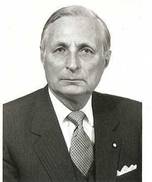 Dear Mr. Myhre,
Dear Mr. Myhre,
I enjoy your positive articles about Lithuania and send them to some 70 friends around the world. The less positive, I keep to myself.
You have lived long enough in Lithuania and must realize that many of the problems of the present day Lithuania are due to their reluctance to learn from the Western countries or accept advice from Lithuanians who lived and studied in the West. The relative success of Lithuania after World War I was largely due to the replacement of Russian educated officials by those who got their degrees in the West. My own father was the first Lithuanian with a degree in forestry from a Western university and introduced major reforms in the forest management, which survived even during the Communist occupation.
Alas, after 20 years of restoration of independence to paraphrase Kipling "The East is East, the West is West and the twain shall never (so far) meet". I spoke to a number of Lithuanians with degrees from top Western universities, who don't want to return to Lithuania - according to them, the "natives" know everything better.
I might add that for me it was easier to obtain an audience with the Pope, than with a Minister for Foreign Affairs of Lithuania.
Yours sincerely,
Ambassador Algirdas Zemaitis
Vilnius – Rome
- Bookmark :
- Digg
- del.icio.us
- Stumbleupon
- Redit it
2011 is the ‘European Year of Volunteering’
- Posted by - (0) Comment
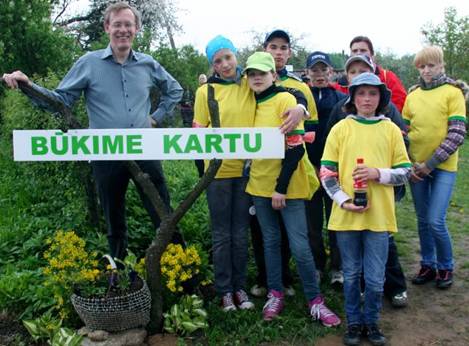
Ambassador Simon Butt (Great Britain) was last year’s patron of the event ‘BŪKIME KARTU’ (‘let’s be together’). The event is organised every May by Vilnius International Club, since 2002, every year bringing more than 100 children from different orphanages and institutions, together with helpers and volunteers from Lithuania’s international community to a farm 26 km north of Vilnius.
The US ambassador hon. Anne E. Derse will preside at the event this year, when an effort will be made to introduce other business and political leaders from other regions of Lithuania so that Bukime Kartu can organically expand throughout all of Lithuania so that many more children can participate in future years. We welcome business leaders, politicians and most of all volunteers to come join us at this year’s event on May 28th at Viva Green Resort. If you would like to know more information about this event, please email us at linas@bangabanga.lt
Text: Linas Ažubalis [linas@bangabanga.lt]
The European Commission has declared 2011 as the European Year of Volunteering. With that declaration I thought it would be a good idea to review volunteer activities in Lithuania, with special focus on the charitable activities from the foreign community within Vilnius as well as the work of the non-government organization Spiritual Guidance Centre for Youth (“Dvasines Pagalbos Jaunimo Centras” - DPJC).
According to EU statistics, there is a large difference between member states regarding their level of participation for volunteering activities. United Kingdom, Sweden and Austria have volunteering rates that are greater than forty percent of the adult population, whereas in Greece, Lithuania and Italy those number drop considerably to a paltry less than ten percent of the adult population. Why such a big difference? The role of culture probably plays a big role, but political and business leadership or lack thereof also plays an important role.
The Vilnius International Club (VIC) is a membership club that attracts expats from around the world who currently reside in Vilnius has written within its mission statement to engage in charitable activities. The VIC had the idea of organizing a day of activities for orphans that would be organized by VIC and its members which include embassies from around the world. The idea was to bring about 100 orphans to one place, which has been a farm located north of Vilnius for the last 8 years hosted graciously by Zina Ginaitiene and make them feel welcome and cared for through a planned day of organized activities. Thus Bukime Kartu (Let's Be Together) was launched. Every year a different embassy takes the honorary lead role to organize the one day event that must seek out over 100 volunteers to make the day run smoothly.
This year Lt. Col. Stephen Timmons from the US embassy is providing organizational leadership for the event along with chairman Torben Pedersen, as well as a handful of other international volunteers. The US ambassador hon. Anne E. Derse will preside at the event and this year an effort will be made to introduce other business and political leaders from other regions of Lithuania so that Bukime Kartu can organically expand throughout all of Lithuania so that many more children can participate in future years. We welcome business leaders, politicians and most of all volunteers to come join us at this year’s event on May 28th at Viva Green Resort. If you would like to know more information about this event, please email us at linas@bangabanga.lt
We would also like to highlight the work of Dvasines Pagalbos Jaunimui Centras based in Klaipeda. (Spiritual Guidance Centre for Youth) DPJC was founded in 1994 by visionary Fr. Ed Putrimas who conceived the idea while living in Toronto. He saw the greatest need for a social program in the port city since the other larger cities had already established programs. After obtaining a grant from the Canadian government, he opened the doors to his center that would reach out to the lives of underprivileged youths and families for years to come. The centers core mission statement revolved around Christian principles and the idea of volunteering to develop social competence among young people and to promote sociability, civic awareness and core personal values. Over time he was able to put together a solid team of social workers and more importantly volunteers who would expand and add programs that would help their community which has been supported by the municipality and other government social programs. In the small confines of the space available to them, DPJC runs a daycare centre for underprivileged families, a Big Brother/Big Sister program, a youth crisis hotline (Jaunimo Linija) as well as “Sniego Gniuzte” which is a prevention program that aims to convince adolescents through activities organized over a weekend that life is fun and is full of meaning without consuming intoxicants. More than 88 registered volunteers and 8 staff members help to run the programs at DPJC. During the last couple of years, as the financial crisis spread around the world, the Lithuanian government and foundations have cut back their funding for such programs. DPJC has tried to maintain their level of commitment to their programs while less and less was available to them via funding. The need for services has not gone away but has increased while more families have been pushed closer to the poverty line. Three years ago DPJC was able to offer youths a learning and computer center, but unfortunately the learning center burned down and since the premise was not insured, the learning center was not replaced. To this day there exists a need to replace the learning center, but ever since funding dried up, the center has become a distant memory with no way to replace it.
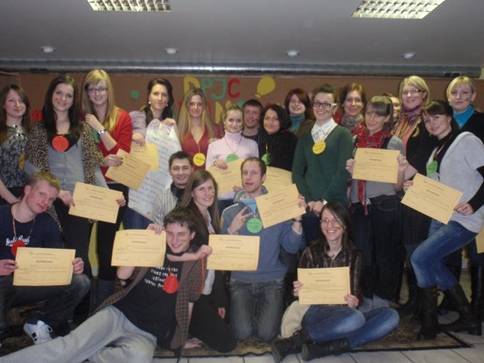
Klaipeda’s Dvasines Pagalbos Jaunimui Centras (Spiritual Guidance Centre for Youth) DPJC was founded in 1994 by visionary Fr. Ed Putrimas who conceived the idea while living in Toronto. He saw the greatest need for a social program in the port city since the other larger cities had already established programs.
The youth crisis line ("Jaunimo Linija") is linked to three cities - Vilnius, Kaunas and Klaipeda, and collectively 93 000 calls and 1 600 letters were answered last year. That equates to over 250 calls and 4 letters each day of the year. On average, one out of every seven callers seeks help because they are suicidal. That's about 36 people per day. To make matters worse, Lithuania has the highest suicide rate in the world (according to WHO from 2008). DPJC realizes this grim statistic and is doing everything within their abilities to help these struggling youths maintain the will to live. Keeping these youths engaged in activities with a feeling of belongingness is one of the main objectives of DPJC.
If you are able to donate old computers, office equipment, sports equipment or toys, DPJC would gratefully accept these items. Also monetary donations could be sent to Darzelio g. 11, Klaipeda LT-93195.
Otherwise we graciously ask working individuals in Lithuania to donate 2% of their taxes to DPJC http://www.dpjc.lt/index.php?page=skirkite-2-dpjc-veiklai, which is a way of helping without opening your wallet, (https://deklaravimas.vmi.lt/lt/Pradinis_Prisijungimo_puslapis/Prisijungimasperisorinessistemas.aspx) but do so quickly because the deadline is May 1st. Tres Mexicanos restaurant, a support partner of DPJC, will provide a 30% discount coupon for anyone who offers a donation in any form, but you must come to Vilnius to use it. Please send the editor a confirmation email at editor@VilNews.com and a coupon will be sent to you.
- Bookmark :
- Digg
- del.icio.us
- Stumbleupon
- Redit it
Easter magic!
- Posted by - (1) Comment
EASTER MAGIC |
|
- - Burial ceremony of 13 January events victims in Vilnius, 1991 - -
|
What made the strongest impression on me while we walked around in the Old Town this Easter day in 1991 was the fact that the Lithuanian people again had gathered in large flocks in and outside the city's many Churches. There was far from room enough for all indoors, so the Churches had hung out loudspeakers for the congregations and audiences to follow the church services even from a distance. Grief was still noticeable, but now it was the renewed hope and faith in an independent Lithuania that first and foremost characterized the mood. It was just fantastic to see so many people gather to listen to sermons and sing hymns, but first of all unite in joint prayers for a new future for their beloved homeland.
Today, nineteen years later, the speakers are taken down from the churches' walls. There is now plenty of room inside for all who wish to attend Easter church services.
But Easter is celebrated! Over the entire country, Lithuanians follow their ancient traditions, as described below. I have personally experienced many warm and happy such celebrations with my family here. The magic of 1991 is not present in the same way anymore, but the strong traditions are still magical in their own way.
My children love to participate actively with grandfather when he decorates the Easter eggs of the year (he also keeps an amazing collection from previous years, great artist as he is), and enthusiasm is always great when we roll and break eggs before we finally sit down to enjoy the adventurous Easter meal. The good, long lasting traditions are some of the most distinguishing characteristic of this country, and Easter is perceived as the most distinctive of all holidays celebrated throughout the year.
I wish you all a Happy Easter!
Aage Myhre
Editor
LITHUANIA'S VELYKOS (EASTER) TRADITIONS

The word for Easter, Velykos, has been borrowed from Byelorussian and means "important day." The word is very accurate because Easter is the year's most solemn feast in Lithuania. Easter is not only the feast of Christ's Resurrection, but also nature's awakening from the winter's sleep.
The early Eastern morn, just before dawn, abounds with magical power. Much of this magic is concentrated in flowing water. Bathing in such water before sunrise prevents all boils, sores, rashes and other skin ailments. If it rains on Easter morning, it is necessary to stand bareheaded in the rain to ensure good growth. Small children who want to grow quickly are reminded of this.
As the sun rises on Easter morning, it "dances" swaying from side to side and changing colour: from green to blue, to red and then golden yellow. This phenomenon can be seen by rising before dawn and watching for the sun's first appearance on the horizon.
Earlier everyone went to the Resurrection services. If on the way you passed a woman, you'll have an accident. To avoid calamity it was necessary to turn around, return home and then take another road to church.
In Lithuania the Easter morning procession was usually conducted around the church. It was very solemn: church flags were held high, girls strewed flowers, the choir and all the people sang, alternating with a brass band, and the church bells pealed loudly. Three turns were made while singing the Lithuanians' favourite Easter Hymn Linksma diena mums prašvito (A Happy Day Has Dawned for Us). After the services, a blessing was made over the Easter food which was arranged in baskets decorated with greens and placed on the altar-rails.
At the conclusion of the liturgy in Church, the people hurried home. In fact, all large and small roads, every path was the scene of races: whoever arrived home first would be successful all year and would complete all work on time. Even persons walking tried to pass those ahead and reach home first. It is not surprising that accidents happened during such races. Perhaps that is why it was said that a woman met on the road brings disaster (someone had to be blamed!).

At home, Easter breakfast was eaten. The meal began when the homemaker peeled a blest Easter egg, cut it and gave a piece to every member of the family. This was done so that peace and love would always reign within the family and everyone would live in harmony. Afterward, a variety of other dishes were consumed: meat, sausages, and cakes. On Easter it was necessary to eat well and to satiety, to "recover from Lent" because of the fast all through Lent. If the area had poor families with no Easter food, their neighbours shared what they had and brought the disadvantaged families everything they need to be satisfied and happy.
Children hunted for hidden Easter eggs left for them by the Velykų Senelė (Easter Granny) or Velykė. Bunnies who painted Easter eggs were also a familiar fixture, but they were only helpers for theVelykų Senelė. Very early Easter morning they loaded Easter eggs into a beautiful little cart pulled by a tiny swift horse. The Velykų Senelė used a sunbeam as a whip. Sometimes the bunnies themselves pulled the cart laden with Easter eggs.
The Easter Granny travels around the country, stopping in every child's yard to leave eggs in baskets placed or hung for that purpose. When they awake, good children find beautifully decorated Easter eggs (and in. more recent times even sweets). Bad children only find a single plain completely white egg. If this happens, the child is disgraced. His friends and family laugh at him. Sometimes bunnies accompany the Granny and help her distribute the Easter eggs. They are kept busy not only before Easter and on Easter day, but all year round baking cookies for children. When parents leave their children behind, they promise to bring them a gift, bunny cookies. Upon their return, they tell the following tale:
"I'm walking through the woods (or orchard or past the bushes) and I see a bunny wearing an apron and hat, his sleeves rolled back, taking sweet-smelling cookies from an oven. I say to him: 'May the Lord help you!' He answers, 'Thank you, thank you. Would you like a taste? They're still hot.' Of course, I dol They smell so good, they look so good. . ."
In the meantime the-child can hardly control himself: "What kind of oven was it?" "Tiny, pretty." "Did you get to taste any cookies?" "Yes, of course." "Did you bring me any?"
At this point, the father, mother or other family member pulls out the goodies and distributes them to the children who are extremely impressed not only by the bunny cookies but also by the baking method itself. They can practically see the flushed, rushing bunny mixing the dough and stoking the oven. How wonderful that morn or dad just happened to be passing at the very time the cookies were done!
Bunny cookies are famous throughout Lithuania. It would be good to remember them outside Lithuania as well.
A variety of games were played with Easter eggs. The simplest is an egg-breaking contest. Two players face off, each holding an Easter egg and hit each other's egg. The one whose egg remains intact is the winner. The egg is held in the fist so that only its tip protrudes. The other player hits it with the tip of his egg. If the egg breaks on the side, the impact was wrong and the owner of the broken egg is not considered the loser. The winner claims the broken egg. After the game the number of eggs won was tallied. It was of paramount importance to have a hard-shelled egg that withstands breaking. In selecting a strong egg, the contestant taps an unboiled egg against his teeth. If the sound is clear and sharp the shell is hard: if dull and muffled, the egg will break quickly; it's not even worth colouring.
Some smart alecks devised an "unbreakable" egg. It was made this way: a raw egg's shell is pricked at both ends. A thin straw is inserted into one end and used to blow out the contents through the opposite end. Another straw with one end shaped as a funnel is then placed into the hole and melted pine or fir sap is poured until the egg is full. If the sap does not flow smoothly, a helper inserts a straw into the opposite hole and draws the air out of the egg. After the egg is filled with sap, the holes are carefully concealed and the egg is then tinted along with others. It weighs about the same as a real boiled egg. Sometimes the empty shell was filled with melted sugar, but it was much heavier and the sugar hardened unevenly making it more difficult to play. Of course, if caught, the cheat was punished. The direst penalty was to eat the "Easter egg."

Another amusing Easter game was egg rolling (picture above). This was best done outdoors, but also could be played in a larger room. A trough is made from pieces of wood or bark to measure about 10 cm long and 15 cm wide (it can also be much longer). One end of the ramp is propped up to produce a downward incline, but not too steep. A small circle is drawn at the bottom of the slope for the playing field into which the eggs will roll. When the game is played outdoors, the trough must be placed on a smooth surface because the eggs will not roll in the circle if there are pebbles, high grass, etc. When played indoors, the surface of the circle must not be too slippery for the eggs will roll out. A low wall or enclosure may be built around the circle. When all the preparations are completed, the players begin the contest. Four to eight persons play. Each uses an egg of a different colour to tell them apart. Eggs may also be marked in different ways. The egg is let down the incline. After one contestant finishes, the next rolls his egg aiming to reach the other's egg and tap it. If the egg hits the first one, its owner wins and takes the first egg. The eggs are rolled down the slope in turn. A contestant who wins egg rolls out of turn until his egg fails to hit another. Another player then takes his egg from the circle and rolls it.
Eggs used in the rolling contest may already be cracked (for instance, already used and won in an egg-breaking contest), but their sides should be intact because eggs with cracked sides do not roll well. The trough may be straight or curved in different ways to make the eggs roll longer. The slope may also be made of cardboard from an old box, plastic or any other material strong and rigid enough to support the weight of an egg.
A simpler egg-roll is done without a trough. A circle at least one meter in diameter is traced on a smooth surface. Barriers or enclosures are placed around the circle to keep the eggs from rolling out (crumpled newspaper may be used). A gate is kept open on one side through which the players push their eggs. The first player is chosen by lot. He rolls his egg into the circle. The second player attempts to roll his egg so that it will tap the first one. The game is played like the one using an incline, but in this case the eggs are rolled into the circle by hand with the player kneeling or sitting on the ground. Because the egg does not roll down a ramp, the entire game depends on the contestant's skill, how he rolls his egg into the circle. If the egg is rolled so hard that it leaves the playing field, the contestant loses his turn.
In the past, only young men and adolescents played egg-rolling contests. It was not proper for girls to do so. They provided their beaus with eggs, cheered the contestants on and guarded the eggs won. Today mostly children (boys and girls) roll eggs.
If guests arrive on Easter, they are given Easter eggs as gifts. The guests also bring an Easter egg for each family member (or at least the hosts and sweets for the children). Easter morning children go "egg begging" but only to the homes of acquaintances, close neighbours or godparents. When they arrive, they say hello and stand silent at the door. It is quite obvious to everyone that an Easter egg is required. The children politely say thank you, wish a Happy Easter and continue on. When Easter was celebrated for three days, no one went visiting the first day; it was unacceptable to intrude upon people on such a holy day as if someone had thrown you out of your own home.
The first day of Easter was said to be dedicated to God, people were expected to conduct themselves seriously and quietly, spend time with their family, eat well and "recover from Lent." The second day was for recreation, visiting friends and having company. The third day was devoted to relaxation. People slept late, recovered from all the merrymaking because work was waiting in the wings.
For Easter, homemakers set out Easter dishes which remained on the table all day. When guests arrived, the women could then spend time with the company and did not need to work. The table was covered with a white cloth and decorated with greens or fruit tree branches (mostly cherry) which were cut and set in water several weeks earlier so they would bloom for Easter. (Easter lilies were unknown.) Greens were also attached to the tablecloth hem which hung down from the table. The table was laden with cold Easter dishes: baked ham, goose, suckling pig, a basket or plate full of Easter eggs, sweet cheese, bread, cakes, etc. Beer (mostly homemade), liqueurs and cider were served as beverages.
Everyone who arrives to extend Easter greetings must be served. It was considered very impolite for the guest to refuse refreshment. Everything had to be at least sampled and the cook praised, else she would feel insulted.

The young who behaved with such solemnity all during Lent wanted to have fun on Easter. They assembled at a larger house to sing and dance. This usually was done in late afternoon or evening. During the day, it was popular to swing in swings and sing. If the Easter weather was warm and fair, the swings were hung from a tall tree so the young could swing higher. Given inclement weather, the swing ropes were tied from barn rafters. People swung not only for the fun of it but to ensure a good harvest next summer, just as on Shrove Tuesday. While swinging, the girls and young men sang special songs.
A group of young men assembled to practice singing Linksma diena mums prašvito (a popular Easter hymn), some other songs and make the rounds. These are the so-called lalauninkai (from lalauti — to talk loudly and much). In many other countries, such as the United States or England, carolers make the rounds before Christmas singing Christmas carols and songs. They may be compared to Lithuania's Easter lalauninkai.
These singers are usually unmarried men sometimes accompanied by a fiddler or harmonica-player. Upon arriving at a house, they first sing an Easter hymn; convey their Easter wishes and then carol. The homemaker gives them cake, sausages, Easter eggs while her husband serves liquid refreshments. The Easter eggs are handed out by the young girls of the household. Although most homes were visited, it was predominantly those with unmarried girls. They were told before Easter that the singers would arrive and tried to make beautiful Easter eggs. This was a perfect opportunity to display their talents and show off before the other village girls. It sometimes happened that the singers refused to accept an Easter egg judged to have a poor appearance and this was considered a major disgrace.
The songs these carollers sang were noted for the refrains repeated after every verse. The verses were short, usually composed of only two lines. The refrain had no connection with the song's overall content. These singers were especially well-known in Dzūkija which is famous for similar types or harmony songs.
On the hill a pear tree stood; under the pear tree lay silvery dew. . . The refrain — vynelis vyno žaliasai — refers to new wine.
It is not necessary for lalauninkai to sing the customary ditties, other songs may be selected.
On Easter, a person can learn the following summer's weather, about his personal happiness and gain protection against various pests if he knows what to do and what guesses to make.
- If he wishes to avoid seeing snakes all summer, he must avoid seeing a needle the first day of Easter.
- If an accident or calamity occurs on Easter, things will go wrong all year, the year will be unlucky.
- We've already mentioned the races home from church on Easter morning: anyone who arrives home first will be first to complete all work, everything will go well for him (especially work in the fields).
- Prayers are said to be really heard on Easter, it is therefore necessary to pray a great deal.
- If Easter morning is sunny and beautiful, the summer will be fair and the weather good; if it rains (or snows) bad weather is to be expected. The worst sign is to hear thunder on the first day of Easter but even this evil may be found to have a "silver lining." If thunder rumbles before leaves have sprouted (trees very rarely had leaves in Lithuania at Eastertime), thieves will have a difficult time plying their trade that year.
- If the sunset is very red, dangerous thunderstorms may be expected that summer.
http://lithuanian-american.org/educate/tradicijos/velykos.html
EASTER EGGS – MARGUČIAI
 |
 |
 |
Decoration of Easter eggs - margučiai - is a very ancient custom in Lithuania. At the foot of the Gediminas Hill in Vilnius archaeologists have found eggs made of bone and clay, which shows that this custom was known in Lithuania as early as the 13th Century. Easter eggs are also mentioned by Martynas Mažvydas in his dedication to his book "Hymns of St Ambrosius" (1549). Easter eggs were particularly popular at the turn of the 20th Century. They were decorated both by grown-ups and children, by rich and poor. Some were dyed in a single colour, some were decorated with patterns.
Decorations are produced by painting patterns on warm eggs with the tip of a stick or a pinhead dipped in hot wax. Droplet-shaped strokes are grouped in patterns, twigs of rue, little suns, starlets and snakes. The most frequent pattern is that of a sun, like those on large and small distaffs. Smaller patterns are joined by dots and wavy lines into larger ornaments. Their combinations are so varied that is is impossible to find two identical Easter eggs. Every village has its own best egg-decorators.
- Bookmark :
- Digg
- del.icio.us
- Stumbleupon
- Redit it
- Posted by - (9) Comment
Easter traditions
LIETUVIŲ VELYKINĖS TRADICIJOS

From reading Aage‘s thoughtful words about Lithuanian Easter traditions it tranformed me back in time to when I was a young boy growing up in the Boston area of Massachusetts. Being the son of a Scottish mother and Lithuanian father I had the great fortune of experiencing the wonderfull traditions of not only the Lithuanian people but that of the Highland Scott‘s as well.
While along with the Lithuanian Christmas traditions we practiced many of the Scottish customs for Christmas and New Year as well but Easter is seemed was a time for the traditions of our Lithuanian ancestors. These were the traditions the Karnila family took with them from our ancestral home in Lithuania, the village of Guronys.
While occasionally we would visit members of my mother’s family on Easter, most often on Easter we would go to the home of my father’s sister, Ana (Karnilytė) Savanovich. This I think was by no small coincidence since months before Easter my brother and I would plead to our parents that it was an absolute requirement that we celebrate Easter at Aunt Ana’s house – as you read on you will understand why!!!
When we arrived at Ana’s house my brother and I were greeted with a basket of decorated Easter Eggs and sweets. This was of course, in true Lithuanian tradition, AFTER we had we had completely passed through the door and were standing inside the house and had also gone through all the kisses, hugs and pinches on the cheeks (from Ana) and handshakes from her husband John. As my brother and I started to go to work on the sweets and admire the eggs next came another big treat. Ana would come out with a tray of freshly baked, still warm cookies baked by you guessed it – the Velykos Kiškis!!! Now I guess the story behind the cookies from what Aage told you got changed a bit on its trip across the Atlantic Ocean but it seems that the Easter Bunny / A.K.A. Velykos Kiškis baked these cookies just this morning and brought them to Ana‘s home knowing that me and my brother would be there.
After enjoying ourselves on the sweets and cookies next came the what was probably one of the biggest events of the day – EASTER DINNER!!! I grew up enjoying Lithuanian traditional food but at Easter this was something completely different. Easter Dinner was the jack pot, the mother load, the meal to end all meals, the trip to the mountain top. Never at any one time were there so many Lithuanian dishes on the table at any one time. Remember on Chirstmas Eve there is no meat. For Easter there was every kind of meat you could think of. Roast pork, roast ham, roast chicken, roast anything you could possibly roast and maybe a few things you wouldn‘t want to roast. In addition blynai, dumplings, kugelis, salads of every variety you could imagine and of course mushrooms used in almost every dish. The table cloth was always white and always was adorned with some greenery. Now of course before we partook in this wonderful feast an egg was cut and a piece was given to every one seated so that as we all ate of this egg we joined as a family and bonded our love and dedication to each other. I must mention that the cutting of the egg became an art form if we had the pleasure of being joined by uncles Kaziemiras (Charles) and Jonas (John) and aunts Marytė (Mary) and Alicija (Alice) and their families. To cut one egg into about thirty equal pieces is truly an endeavor. After the meal came an incredible assortment of cakes, pies and sweets. Oh, did I mention that to wash this all down Ana had made some home made gira?
After stuffing ourselves to the max came some activities to work off all the food. It seems that the Velykų Senelė/Easter Grandmother had stopped by earlier that morning and left some beautifully decorated eggs for me and my brother. The problem was that she had hidden them outside and our task was to find them. As a very young child this was a little confusing because I thought it was the Easter Bunny’s responsibility to deliver all the eggs to every one. So I kind of sorted things out and came to the conclusion that yes in fact delivering the eggs was the Easter Bunny’s job however the eggs used in the egg hunt was the responsibility of Velykų Senelė. As I got older we then understood that this was another wonderful tradition of our people. I can say one thing about Ana and John, when it came to hiding eggs they displayed some incredible imagination not to mention athletic ability. You would not believe what we had to go through to get some of these eggs!!! To be honest, I don’t know who had more fun, the children finding the eggs or Ana and John watching us.
After finding all the eggs or let me put it this way, after finding all the eggs we could find (I think after fifty years there are still some unfound eggs sitting around there some where) we went back inside. All the children counted up the eggs they had found and the one with the most received some sweets as their prize for being the best egg hunter.
What came next was to me the most special event of the day. Of everything we did this is what I most fondly remember of our Easter traditions. For every child Ana had made a specially decorated egg. She would go around and present each child with this incredible work of art. All the children had the same reaction. We would just sit there with our mouths agape and admire this wonderful creation. As you can imagine, it is difficult for young children to appreciate hand crafted beauty, especially little boys, but these eggs where so magnificent it truly got our attention. We would hold the egg in our hands and just stare at it in wonderful admiration. In addition to the eggs beauty we also were appreciating the love that aunt Ana had put in to making this egg for us but most of all, as we sat there admiring the beautiful Easter egg we, even as little children knew we were holding the tradition of the Lithuanian people and of Lithuania in our hands. I so vividly remember holding these special eggs in my small hands and saying to myself – This is Lithuania and I am Lithuanian.
I would please ask you to understand that what I wrote of is not about me and not about the Karnila family. What I wrote about was a Lithuanian family, Lithuanian traditions and Lithuania. For every people, their traditions and customs are not only an important part of their past but also an important part of their future. This is so true of Lithuania. The preservation of beautiful ancient traditions has been one of the things that helped the Lithuanian people remain strong and preserve their identity as a people and a nation through so many adverse situations. Unfortunately, every year some of these traditions tend to slip away one by one. While we still practice some of these traditions many have become just a memory.
I wrote this as an invitation to all our readers to write to us telling us about the beautiful Lithuanian Easter traditions that you remember from years gone by and also tell us of the traditions you, your family, friends and neighbors still practice to this day. It is our hope that in sharing these traditions with all our readers you will be reminded of some wonderful tradition from the past and this Easter and for many Easters to come you will again include these traditions in your Easter celebrations. We would also like to remind you that there are many people of Lithuanian nationality living around the world that are desperately trying to find out more about their heritage and about the culture and traditions of their Lithuanian ancestors. By sharing your traditions with all our readers it is very possible that a person, intensely proud of their Lithuanian ancestry, some where in the world this Easter will for the first time in their lives be able make some Lithuanian Easter traditions a part of their family’s celebration of the resurrection of Christ.
So dear readers, we invite you to please send to us some of the Lithuanian Easter traditions that are or were an important part of your family so that we can share them with Lithuanians around the world.
Su Dieva
Vin / Vincas Karnila
Associate editor
- Bookmark :
- Digg
- del.icio.us
- Stumbleupon
- Redit it
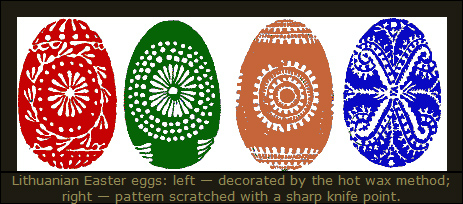
Decoration of Easter eggs - margučiai - is a very ancient custom in Lithuania. At the foot of the Gediminas Hill in Vilnius archaeologists have found eggs made of bone and clay, which shows that this custom was known in Lithuania as early as the 13th Century. Easter eggs are also mentioned by Martynas Mažvydas in his dedication to his book "Hymns of St Ambrosius" (1549). Easter eggs were particularly popular at the turn of the 20th Century. They were decorated both by grown-ups and children, by rich and poor. Some were dyed in a single colour, some were decorated with patterns.
Decorations are produced by painting patterns on warm eggs with the tip of a stick or a pinhead dipped in hot wax. Droplet-shaped strokes are grouped in patterns, twigs of rue, little suns, starlets and snakes. The most frequent pattern is that of a sun, like those on large and small distaffs. Smaller patterns are joined by dots and wavy lines into larger ornaments. Their combinations are so varied that is is impossible to find two identical Easter eggs. Every village has its own best egg-decorators.
- Bookmark :
- Digg
- del.icio.us
- Stumbleupon
- Redit it
Verbų sekmadienis – Palm Sunday
- Posted by - (1) Comment
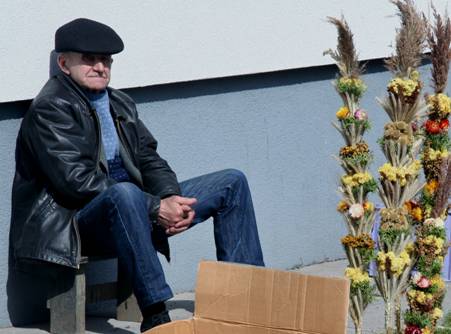
The Christian world celebrates Jesus' noble entry into Jerusalem on the last Sunday before Easter. In Lithuania this day is called Verbų Sekmadienis – Palm Sunday. When Christianity came to Lithuania, plants which sprouted earliest were honoured during spring feasts. Even now, willows, osiers and weeping willows are consecrated on Palm Sunday. Mythological folklore relates that one of the willows, called Blindė, had been a very fertile woman, bearing numerous children. Earth, the most fertile mother was jealous of her. When Blindė walked through a wetfield, her feet sank into the mud. Blindė turned into a willow tree out of great sadness.
The osier, with male spores was regarded as an unusual tree. Folklore tells that the osier grew out of a secretly murdered man. A fife made of osier wood, speaks in a man's voice. Evil spirits avoid it because of its red color.
Palms of Vilnius (Verbos)
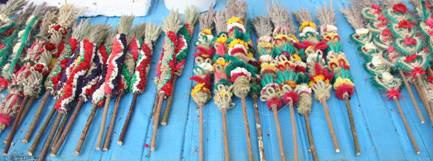
These decorative, dried plant bouquets had no ritual purpose earlier. However now with the addition of juniper and osier branches they have become Palm Sunday tokens. The Vilnius' palm is today produced in fifteen villages in the Vilnius region.
Painters were among the first to show interest in palms. In 1847 K.Ruseckas painted a young girl with a bunch of palms in her hands and in 1913 he presented palms in colorful folk art and trade show posters. The origin of Palms of Vilnius has not been determined. It is thought that they could have been ancient Vilnius trade guilds' processional adornments, manufactured mimicking Jesus' entry into Jerusalem. Vilnius' Palms are created using dried wild plants, forest and garden blossoms and other plant parts. About thirty different plants are used, among them are mosses, berry greens, timothy grass, St. John's worth, tansy, yarrow and many others.
The making of palms begins the day after Shrove Tuesday and continues till Palm Sunday. This is a project that involves the entire family, however most often it is women's work. The most popular palms are roller shaped. Now there are wreath and whip shaped, flat and puffed out.
 |
PALM SUNDAY PALMS [ a.k.a. VERBOS ]
The Christian world celebrates Jesus' noble entry into Jerusalem on the last Sunday befor Easter. In Lithuania this day is called Verbø Sekmadienis – Palm Sunday. When Christianity came to Lithuania, plants which sprouted earliest were honored during spring feasts. Even now, willows, osiers and weeping willows are consecrated on Palm Sunday. Mythological folklore relates that one of the willows, called Blindë, had been a very fertile woman, bearing numerous children. Earth, the most fertile mother was jealous of her. When Blindë walked through a wetfield, her feet sank into the mud. Blindë turned into a willow tree out of great sadness. PALMS of VILNIUS [ a.k.a. VILNIAUS VERBOS ] |
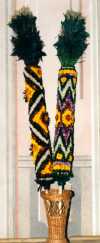 Verbos made by Leokadija Šalkovska. Photo by Gediminas Svitojus |
- Bookmark :
- Digg
- del.icio.us
- Stumbleupon
- Redit it
- Posted by - (2) Comment
Lithuania’s Good/Evil

The deepest foundation on which morality is built is the phenomenon of empathy,
the understanding that what hurts me would feel the same way to you.
Time Magazine, March 2007
Lithuanians are probably among the world’s most contrast-embossed peoples.
On the one hand, this nation brought forth very prominent humanists, thinkers and skilled professionals in many fields; scientists, politicians, businessmen, church leaders and leaders within culture, science and many other areas.
On the other hand, Lithuania is overrepresented among Europe's criminal gangs, and also internally in this country there are many individuals and groups that have given Lithuania an international disgrace spot that will be difficult to wash away, at least in the short term.
I spoke a few days ago with a friend from my home county far up in northern Norway. He told me that five years ago he had become aware of a Lithuanian who had moved to the town where my friend lives. This Lithuanian, my friend told, got a job in a carpentry workshop which had never distinguished themselves with particularly high quality of the products they delivered. But in less than a year all became very different, when the Lithuanian proved to be a very capable carpenter. Not only were the products now supplied of much higher quality and all delivered according to agreed time and price, but also the company itself seemed to undergo a change for the better, all because of a skilled Lithuania that so clearly showed what real quality and work ethics mean for a company.
In the same area in Northern Norway a leading police chief in an interview with a local newspaper asked people to report to the police if they saw cars with Lithuanian number plates, and in another Norwegian district, people have already through several years made it a rule that they alert the police as soon as they see a car with Lithuanian registration plates.
Norwegian and other European prisons are packed full of Lithuanian criminals, and many have asked themselves whether the price of the Schengen Agreement for open borders in Europe is already becoming too high. It is also constantly asked why Lithuania itself does not do much more to crack down on criminal bands in the towns and districts where they originate.
Increased punishment and restriction of freedom does of course not solve a serious problem like this, and I am of the opinion that the authorities, communities and neighbourhoods must be far more actively working in teaching and integrating children and youth from families with potential problems. The many fine people who value honesty and justice high should no longer sit still, but take immediate action to help Lithuania's future generations follow in the footsteps of the good.
My guide was Monsignor Kazimieras
One of the first things I experienced when I came to Lithuania 21 years ago, was a private tour of the cellars under the Vilnius Cathedral. My guide was Monsignor Kazimieras Vasiliauskas, who in a truly remarkable manner managed to make alive Lithuania’s proud history while we walked among the graves of the country’s former dukes and others who so greatly helped to make Lithuania a world leading country for hundreds of years. The Monsignor told me about his years in, respectively, German and Russian captivity, and I left the Cathedral with a deep sense of respect and admiration for this great country and a cleric who had been forced to so much suffering because he always kept his faith and humanity high. I felt I had been very close to this nation's historical and contemporary pride and goodness for a few minutes, represented by the graves of the country's prominent leaders through the centuries and a man who so clearly had preserved his faith in good, even throughout many years of imposed suffering.
I have never personally met Henrikas Daktaras, the man often referred to as Lithuania’s leading criminal authority, but I have through many years seen the results of his and his like-minders’ destructive activities both here in Lithuania and also far beyond Lithuania’s borders. The admiration and respect I got for Lithuania after the tour with Monsignor Vasiliauskas felt almost like a distant dream as I in the early 1990s started discovering what was going on in this country; with regards to corruption in the corridors of power, of public 'theft' from its own people, as well as acts committed by criminals and half criminals with greed and lack of respect for their fellow man as their leading motives.
Wikipedia states that evil are the acts that are regarded as morally bad, intrinsically corrupt, wantonly destructive, inhumane, selfish, or wicked.
As per another definition, evil is that which is the reverse of good, whatever is censurable, mischievous, or undesirable, morally depraved, bad, wicked, vicious; doing or tending to do harm, hurtful, mischievous, prejudicial, depraved intention or purpose, desire for another's harm, causing discomfort, pain, or trouble, unpleasant, offensive, disagreeable, troublesome, painful.
Lithuania's good people should not let the destructive and selfish powers rule or continue to influence fine people’s lives here and abroad. Those who want the best for this nation should as soon as possible start discussing what could be done to take control over and neutralise the nation's destructive forces, no matter where and at what level these now reside.
Lithuania deserves to again be counted among the world's great nations, but it is up to the Lithuanians themselves to fight the evil and the negative forces that still have far too free scope to continue their misdeeds. As long as these forces find fertile ground in the Lithuanian society, this country will remain on a stage of development that should have been left behind long ago.
Aage Myhre,
Editor
| Monsignor Kazimieras Vasiliauskas (1922 – 2001) 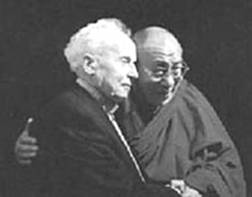 Catholic priest, monsignor. Spent years as a prisoner in Germany and later in Stalin's concentration camps and at the coal mines of Komi, Siberia. The Soviet authorities only permitted him to return to Lithuania in 1969. |
Mafialord Henrikas Daktaras (1957 - ) 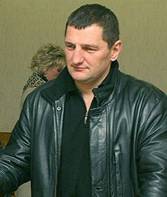 Dr. Henry (alias – Henytė) – one of the most famous criminals of all times in this country. Local media often refer to him as Lithuania’s main criminal authority. |
- Bookmark :
- Digg
- del.icio.us
- Stumbleupon
- Redit it
Lithuania’s identity?
- Posted by - (2) Comment

What happened to Lithuania's identity? This country that for hundreds of years was characterized by tolerance, openness and multiculturalism? This country that 20 years ago arose from decades of Soviet occupation and oppression in a very dignified, admirable way that resonated throughout the world? What happened to the ideals of the Middle Ages, the years between the world wars and the popular movement that triggered the nation’s new declaration of independence in 1990?
Lithuania’s Ministry of Foreign Affairs may have found a way to restore the country’s identity by pioneering a new type of symbol to convey the character of this nation in a ‘fragrant way’ – with a bottle of perfume. The ministry has already sent bottles of the new fragrance to Lithuania’s embassies around the globe. The project with olfactory appeal is "a good example of how to communicate Lithuania to the public in an innovative way", according to a foreign ministry statement. "We wanted to create something special, representing Lithuania and the Lithuanian character," Mindaugas Stongvilas, an expert in emotional communication behind the project told the newspaper Vilniaus diena earlier this year.
In Scandinavia and the British Isles, it is probably the word crime, which will be first mentioned if one is asked to say something about Lithuania’s identity of today, though most people know very little about Lithuania whatsoever.
The few times Lithuania is 'honoured' with headlines in Western media, it involves, unfortunately, all too often stories about crime or about the nation's homophobia and the neo-Nazis’ parades and newfound popularity in a country that above all others should have learned from the sad and serious mistakes to its own Jewish population during the years of Holocaust.
Identity is much more than new slogans, logos, or perfume-stunts – although they also are of important elements in creating a new country profile.
My suggestion is that this nation looks back to the times when tolerance, dignity and widely recognized respect for other nations, religions and cultures was this country's hallmark and identity.
Because that’s what this fine country deserves...
- Bookmark :
- Digg
- del.icio.us
- Stumbleupon
- Redit it
- Posted by - (2) Comment
Russia’s nuclear projects:
A deadly threat to energy independence
of the Baltic States
Text: Dr. Stan Backaitis
P.E., SAE Fellow, USCBSC Consortium, member of CEEC

Ignalina Nuclear Power Plant on the shore of Druksiu lake
Russia can turn the lights out on Lithuania and the other two Baltic states any time it pleases. And they can't turn them back on without Russia’s permission.
Not only does this small, central European nation, as well as its neighbors Latvia and Estonia, not have access to the Russian owned-switch, but, to a large extent, it also depends on energy supplies from Russia to power its electricity generating plants; power that is needed for energy and economic independence. Lithuania as well as the other Baltic countries, being poor in energy resources, are facing a tough future and are seeking solutions.
What would you do?
Background
Lithuania’s Ignalina Nuclear Power Plant (INPP), a Soviet Union built installation with two RBMK-1500 reactors, was finally shut down on December 31, 2009. Closing down INPP was one of the conditions of Lithuania’s accession to membership in the European Union (EU). Overnight, the shut down changed Lithuania from a country exporting large amounts of electricity to a huge electricity importer, mainly from Russia, which is seen as an unreliable, and driven by political motives, supplier. Unfortunately, most of the remaining Lithuania’s power plants, that produce electricity, are fired by natural gas. Russia is its only accessible supplier.
To escape from dependency on Russia’s energy resources, Lithuania’s government, upon shut-down of the first INPP reactor in 2004, (Fig. 1) has made occasional statements of building a new nuclear power plant (NPP) in partnership with Latvia and Estonia. However, beyond rhetoric, nothing concrete was accomplished for the following four years. Only in June 2009, Andrius Kubilius, upon forming a new Lithuanian government, indicated that a new NPP, serving all three Baltic countries - Latvia, Lithuania, and Estonia, as well as Poland , would be built and put into operation in the 2018-20 timeframe.
In December 2009, the newly formed Lithuania’s Energy ministry (ENMIN) announced a tender offer for the development, design, construction, and management of a new NPP at Visaginas (VNPP). Review of some 20 responses indicated that only five of the proposals were worthy of further consideration. In September 2010, the ENMIN asked the five respondents to propose committing bids. Of the two responding parties in November 2010, only South Korea’s “Korea Electric Power Corporation” (KEPCO) was found to be in full compliance with the terms of the tender offer. However, two weeks later on December 10, 2010, KEPCO announced withdrawing its proposed bid.
The news media in Lithuania and the other Baltic countries are busy speculating about reasons for failing to home-in on an investor for the new NPP. The stories range from Russia’s pressure on all bidders to withdraw from the bidding process and its announcements to build two separate NPPs on the eastern and southwestern borders of Lithuania to KEPCO’s withdrawal because of possible armed conflict between North and South Koreas.
This mini study recognizes several factors that appear to have been predominant causes for the failure of the tender offer. They are: political, economic, financial, and indecisions partly due to Russia’s controlling influence on the existing electricity system and partly due to insufficient appreciation by Lithuania’s politicians and energy planners of how large international corporations and financial institutions operate as well as interact with their respective countries’ governments in such large financial commitments.
Political factors
Although Lithuania and the other two Baltic states have attained political independence, they still belong by virtue of electricity and gas imports to Russia's sphere of influence (Fig. 2.). Apparently, Russia has no intention to strong-arm the Baltic states over energy issues, since the sale of energy to them provides Russia substantially better margin of profits than sales, for example, to western Europe. Being the sole supplier of energy resources, Russia has a tremendous amount of leverage over the three countries in terms of their price and delivery. To break away from this dependence, Lithuania and its partners Latvia and Estonia announced their intention in 2004 to build a new nuclear plant that would provide them the needed electric power and thus free them of imports from Russia. However, for nearly four years, while the second reactor of INPP was still operating, Lithuania showed little initiative in firming up the plans to build the new NPP.

Russia's Controlled Eletricity Infrastructure in the Baltics
While Russia until 2008 had no apparent intentions to build a new NPP in the Baltic region, realizing that Lithuania’s plans for a new NPP are in disarray, Moscow took the bull by the horns and announced in early 2009 its decision to construct a two reactor NPP in the Kaliningrad region – the Baltiiskaya nuclear power plant (BNPP). Inasmuch as the first BNPP reactor is aimed to begin operations in 2016 and the second one in 2020, the need for power from a significantly more expensive to fund reactor in Lithuania was put into question. By deciding to build the BNPP, Russia gained a strategic advantage. It reinforced its position as an overpowering electricity supplier to the Baltic region and eventually to Western Europe. This situation has become even more complex by Belarus announcement in 2009 of its intention to build a new NPP in Ostroviec in the Grodno region, in close proximity to the Lithuanian border. Russia’s Putin and Belarus’s Lukashenka (Fig. 3) signed a financial agreement on March 16, 2011, securing Russia’s financial backing in the amount of 9 bln. USD and technical assistance for the Ostroviec project. In return, Russia will own 50 percent share in the future NPP and is likely to offer its share of energy output to the European market.

Putin and Lukashenka agreeing on financing the Astraviec NPP
It appears that Lithuania’s desire to free itself from dependence on Russia’s energy supplies, by building the VNPP, might be a very desirable and valiant goal, but not very realistic in the current energy politics environment. Of course, this might change if the EU agreed to provide substantial funds for this project. However, there are no current signs for this kind of support apart from some vague statements by EU commissioners about the importance of energy independence.
Upon closure of the first INPP reactor in 2004, several Lithuania’s government officials talked on a few occasions, of the need to build a new NPP in partnership with Latvia and Estonia. In 2007 Lithuania invited Poland to join as an additional partner. However, even to date the partnership statements about the new NPP remain more rhetoric than formal commitments and contractual obligations. Normally, such massive projects require published consensus by all parties defining the need and scope of the undertaking, identifying principal elements, time schedules, financial contributions, sharing work and responsibilities by each participant, etc. Of further concern is apparent lack of commitment by both Latvia and Estonia to sever their ties from Russia's NorthWest (BRELL) power grid, which is essential for the Baltic states to achieve complete electrical independence.
The only accomplishments by Lithuania’s government during the first four years, from closure of the first INPP reactor in 2004, was to create in 2008 a semipublic utility corporation - the LEO.LT and the VNPP project office, with the intention of giving the NPP project some momentum. However, since then, in nearly two years, the rhetoric continued without any visible results.
The ENMIN, upon its establishment by the Kubilius government, dissolved the LEO.LT in September 2010 for its ineffectiveness. Subsequently, the ENMIN issued a tender offer for building the VNPP. However, the ENMIN failed to include its partners in the preparation of the tender offer and thereafter, in the review of the responses. Such exclusion of partners, significantly reduced the integrity and credibility of the project and its importance in the eyes of the bidders, particularly that Latvia, Estonia and Poland are supposed to be financial participants and customers for electricity. To make matters worse, the partners by now were also openly discussing the possibility of going alone with the acquisition of nuclear power plants for own electricity needs.
Economic factors
Shortly after closing INPP’s first reactor in 2004, Lithuania had a relatively easy opportunity to resolve its energy problems by building a new NPP. Its economy was strong and growing, raising the needed finances was relatively easy, and its neighbors, Latvia and Estonia, were very interested in participating in the project as receivers of their share of electricity. Construction of NPPs in the world was until 2007 in relative stagnation, and numerous NPP construction companies were eager to compete for new construction jobs. However, in the latter part of 2007 and in later years, the emerging economic crisis in the Western World and escalating energy demands have begun to radically increase the number of NPP constructions, particularly in China and India. It is to be noted that over 60 new NPP constructions have been started in the past several years throughout the world and many more are planned. Such rapid escalation of construction activity. coupled with less than a dozen companies capable of building NPPs, resulted in large increases of NPP construction costs. Lead times needed to manufacture major reactor and power plant components are now well over five years.
Regrettably, Lithuania's delay for almost four years to come to a decision undermined a relatively easy opportunity to become a nuclear based power producer again. Current environment for the construction of a new NPP is particularly unfavorable to small, highly indebted countries, compared to those having reasonably large initial down payments including capabilities of guaranteeing repayment of loans. Accordingly, it is not surprising to see low level of interest by large investors to participate in the project, because VNPP’s competitive viability became highly questionable in view of Russia’s intention to construct competing NPPs in the Kaliningrad enclave and in Belorussia.
Russia’s skills to use various opportunities to its advantage should be considered normal commercial practice but with added political overtones. By being a major and an aggressive player in the nuclear field, Russia is capable of offering a variety of economic and financial enticements to attract business. For example, a late news item in the energy news media indicates that Russia offered to provide a long term low interest loan to the Czech Republic if it was awarded the contract to build a two reactor power plant. As a sweetener, the Czech industry would be invited to build a number of large NPP components not only for the Czech plant, but also for other NPPs that Russia is constructing in different parts of the world.
Russia, being keenly aware of the attempts of the Baltic countries to break away from their electric energy dependence, saw upon closure of the INPP, a considerable power shortage developing in the region. It also foresaw, that Lithuania, by delaying its resolve to replace the INPP with a new NPP, would allow Russia to fill the energy void with a two reactor power plant in the Kaliningrad region with expressed aim to sell its output in the Baltic and the Western European markets.
Russia knew that if its new plant NPP was built and put into operation ahead of the VNPP, it would have a significant price advantage over the price of electricity that any future Lithuanian NPP could offer. Such information would be a considerable deterrent to investments in any future NPP venture in Lithuania. It reasoned that since BNPP would be built with non-returnable state funds, Lithuania’s planned NPP, constructed with borrowed private funds, would have to impose hefty surcharges to consumers of its electricity to pay off the debts. Accordingly, VNPP would have great difficulty competing based on the price of electricity that did not carry such charges. Understandably, knowledge of such financial burdens would cast in doubt the financial viability of the VAE in the eyes of any potential investor.
It can be agreed with ENMIN claims that the direct expense to produce electricity at VNPP would be relatively low. However, it needs to be pointed out that the cost to the consumer would be significantly higher upon inclusion of expense to maintain reserve power plants at capacities similar to that of the new NPP, outlays associated with treatment and storage of nuclear waste, profits to the foreign plant operator, payments covering the return on borrowed capital and corresponding interest, and very extensive interior and exterior safety provisions. Published comparisons of average costs for labor and nuclear fuels to produce 1 kWh of electricity at a U.S. NPP are around 2.2 cents USD, and about seven Lithuanian (lt) cents (about 2.7 cents USD) at INPP. The addition of all other expenses, such as operating and maintenance costs at the NPP, plant and equipment amortization, and transmission and distribution of electricity expenses result in an average delivery price between 8 and 9 cents (USD) for 1kWh to the U.S. consumer, while comparable cost of 1 kWh electricity produced by INPP was approx 30 cents (lt) (12 cents USD) to the Lithuanian consumer. After closure of INPP, the price of 1kWh of electricity rose to 45 cents (lt).
Future costs to produce a kilowatt hour of electricity at the future VNPP are unknown. Lithuania’s ENMIN estimates indicate 34 cents (lt). Recently, Turkey signed a nuclear power plant construction contract with Russia. It guaranteed Russia for building and operating the NPP, a purchase price of 35 cents (lt) per kWh for some 15 years. Inasmuch as Lithuania proposed in the tender offer similar funding and operating conditions as those between Turkey and Russia, it would be reasonable to assume that 35 cents (lt) per kWh would be the minimum price of electricity sold by the operator of the future VNPP facility Accordingly, it might be difficult to convince any buyer at the BaltPool or NordPool exchanges to purchase electricity at such a price if Baltiiskaya NPP can offer the same for 10 cents (lt) less or even lower, since it would not be burdened with the return on capital and interest payments. The only way VNPP could compete on price would be by the government subsidizing the price difference.
The price of electricity to the consumer is also dependent on amortization of the plant and the power grid, losses within the transmission and distribution systems, and theft of power from the network. Unfortunately, repayments of interest on the loan will need to start before the first watt of electricity is generated. Inasmuch as Lithuania is already highly indebted, any large loans for the NPP would fall in the high risk category, ranging from 10 to 12 percent interest rates. Assuming that the construction of the VAE would require some 18 to 20 bln. litas (7-8 bln. USD), expected interest payments would keep escalating as the construction is progressing, and would amount to approx. 2 bln. litas (800 mln. USD) annually just before the plant produces the first watt of electricity. Inasmuch as the government does not have any funds to make such payments, this money would have to be collected as additional fees to the consumers of electricity. Such payments would be expected to add approx. 15 to 20 cents (lt) to the normal price of electricity that is either imported or generated by conventional power plants. It would be extremely difficult for anyone to justify a price escalation of this magnitude when the same electricity can be imported or bought from BNPP for substantially less.
While the current Lithuanian government is attempting to remedy this unfortunate course of events, regrettably, the four year delay and the arrival on the scene of other large scale power generating capabilities, might have killed or greatly impeded the opportunity to build a competitive NPP. As a result, Lithuania’s people are now burdened by very high electricity prices, and will have to face not only their further escalation, but also uncertainty in continuous supply of electricity and natural gas in future years.
Financing Considerations
Lithuania’s politicians regarded the statements by Russian and Belarus leaders of intention to construct the BNPP and the Ostrovets NPPs, as bluffs, even as late as mid 2010. Moscow was quite clear that the BNPP would generate electricity mainly for export to Western European and the Baltic countries and not for internal needs. This was confirmed in March 2011 agreement between BNPP and Lietuvos InterRAO to import to Lithuania 1000 MW of electric power. By deciding to build a new NPP in the Kaliningrad region, Russia assured that Lithuania’s new NPP, if it was to be built, could not compete on price of electricity generated by the BNPP. As a result, once Russia’s plans for the BNPP were made public, it became extremely difficult for Lithuania to attract investors to finance the VAE project, unless the EU would guarantee the loans. Furthermore, most recently Russia invited both Poland and Latvia to participate as partners in the construction of BNPP in an attempt to wean them away from participating in Lithuania’s NPP project. In addition, Poland was offered not only low electricity prices by the BNPP, but also the opportunity to earn money for the transmission of electricity to Western Europe through Poland's existing power transmission network.
Lithuania’s government created in 2008 a semi-public LEO.LT energy corporation for the purpose of taking care of Lithuania’s energy needs, and by working together with its Latvian and Estonian partners to raise sufficient finances for the construction of a new nuclear power plant at Visaginas. However, upon establishment of LEO.LT, it became apparent that its two shareholders – the government and a private “NDX Energija” corporation – had totally different interests. The government interest was to ensure energy security through construction of a nuclear power plant, while the private investor’s interest was to maximize profits primarily by importing electricity. Such diverse interests were not inducive to good dialogue either in determining on what needs to be done or to conduct constructive discussions with their other partners. To make matters worse, while NDX Energija was to lead and guide the technical effort to build the NPP, its representatives acknowledged that they did not have the needed technical expertise either to plan and organize the building of a nuclear power plant or to raise the needed finances.
Large-scale investors in the western world showed over the years very little interest in Lithuania's energy problems and particularly, its nuclear initiatives. Significant international investors view Lithuania’s and the Baltic states’ commercial energy viability as highly risky, unattractive due to relatively isolated geographic location, small internal and difficult access to large markets, and poor in natural resources. Discussions with a vice president of one of the largest NPP construction company and with several operators of nuclear power plants revealed that they see “the Baltic countries as too small of a market in the region, bordered by a powerful and unpredictable neighbor who is also a significant size low cost energy producer and is ready to undermine any competition using price and other economic as well as political measures. Lithuania, even partnering with its neighbors, could not assure a return of investment of nearly 10 bln. USD, unless the EU would guarantee the needed loans. Considering that the EU had most recently to rescue a number of euro zone member countries from bankruptcy, it would be extremely difficult to find banks willing and capable of providing high risk loans to additional EU countries that are drowning in debts and for projects that might not be financially viable.
Following the publication of a tender offer for the construction of VNPP, Lithuania, as far it is known, has still failed to engage its potential partners in constructive discussions and developing obligatory agreements on the scope and extent of the new NPP, including their projected power needs and their financial contributions. Without such documentary evidence, it would be very difficult to attract serious investors. In spite of these shortcomings, the press reported several ENMIN hints of some 20 companies responding to the tender offer of which only five were found worthy of further consideration. Upon request of the five to submit binding bids, only two responded. Of the two, only KEPCO was found to be fully responsive to all technical specifications, building deadlines and raising the needed financial resources. At this point, the ENMIN vice minister Romas Svedas noted, that Lithuania was ready to inform its regional partners in Latvia, Estonia and Poland about the agreement with KEPCO. However, after two weeks of submitting the final bid, KEPCO notified the ENMIN on December 16, 2010, of its withdrawal from the project.
The withdrawal from the contest of the last candidate, forced the ENMIN to consider a new phase of negotiations with parties that might be interested in the NPP project based on a different set of conditions. With no time to waste, the ENMIN announced that direct negotiations with potential investors would start in January 2010 with a decision to be made as early as June 2010. Obviously, the new conditions would have to be considerably more favorable to attract potential investors. Knowing of the failure of the tender offer, all potential bidders will be at considerable advantage to extract for them much more favorable financial rewards. Any such agreement would be disadvantageous to Lithuania and its partners. At this point, with the government’s prestige on the line, the government either would have to agree with the best offer it receives, or find some excuse to gracefully withdraw its offer.
Indecisions: a detriment to the future
Lithuania, upon attaining independence, has inherited a number of large industrial enterprises such as INPP, electric power and gas facilities, an oil refinery, a large fishing fleet, sizeable electronics industry, etc. Unfortunately, a number of them were mismanaged and not developed to their full potential. Numerous others were either privatized, sold as junk property or went into bankruptcy and disappeared as functioning entities. Similarly, looking at the government delays to plan and take timely action in constructing the new NPP, keeping the public and the partner countries at a distance, continuously revamping the organization and management of the project, suggests that these actions were not in the best interest of the country and its people. It appears that the opportunity was shattered by competing interests between political parties, personal ambitions, disregard of partners' interests, and manipulation by powerful and resourceful interests of the neighboring country to gain strategic advantage. Apart from commitment to the EU to close the INPP, it is not clear what rationale guided the planning or the absence of planning of Lithuania's energy future upon closure of the INPP first reactor in 2004. It can be inferred from some newspaper reports of public officials’ comments that one line of thought was that Lithuania has a reliable natural gas and fuel supplier as well as sufficient power generating capacity of its own to produce adequate amounts of electricity to satisfy all Lithuania’s needs well into mid 2030-s. With gas and oil available in abundance from Russia, there is no urgency to build a replacement nuclear plant for the INPP. Another line of thought was that, shortly before the final closure of the INPP, EU’s authorities in Brussels would be approached with a story that the closure of the second nuclear reactor would create for Lithuania and its population very serious economic hardships. Since it would take nearly a decade to build a new nuclear plant, the EU would be asked to allow the INPP to continue the production of electricity several more years beyond 2010. Unfortunately, Lithuania’s people, who are paying the electricity bills, were never asked of what might be the best approach and/or solution in their judgment.
This line of wishful thinking or self deception prevailed for nearly four years until the arrival of the Kubilius government in late 2008. Although the preceding Kirkilas government announced as early as 2006 informal agreements with Latvia and Estonia to build a new nuclear power plant in Lithuania, surprisingly, the "National Energy Strategy 2007" (NES 2007) document covered the new NPP topic by only one sentence. It stated "that upon closure of the Ignalina NPP and until construction of a new nuclear power plant, the primary source for electricity will be “Lietuvos Elektrine” (Lithuania’s primary power plant)”. In contrast, the same document described in considerable length the development of Lithuania's energy in future years by diversification of energy sources in line with EU directives, such as competitiveness in energy generation, expanded use of natural gas, energy security, and preparation of proposals for a common EU energy policy dialogue with Russia. Of significance is also a discussion of expanded electricity generation using combined cycle gas turbines at “Lietuvos Elektrine”, whose operation is based on imports of natural gas from Russia.
It is not clear why the Government of Lithuania in spring 2007 did not consult its Latvian and Estonian partners by unilaterally including Poland into the partnership. This greatly alarmed both Latvians and Estonians. As a result, in energy conferences in Tallinn and later in Washington, D.C., both in 2007, Latvian and Estonian speakers were publically discussing consideration of smaller nuclear power plants for their future power needs. Latvia did not hide its frustration with Lithuania’s indecision and fogginess regarding the plans to build a new nuclear power plant. "Of course, we are now, as before, very skeptical about this project. From time to time, us, the Estonians, and the Poles wrote letters to Lithuania’s government, delivered appropriate demarches, hoping to somehow move the Lithuanians into action”, said Artis Camphors the Latvian Minister of Economic Affairs.
After Andrius Kubilius takeover of the government in late 2008 and upon establishment of the ENMIN, an extensive review was initiated to determine Lithuania’s current state of affairs of the energy sector and its future needs with particular concern on steps to be taken to attain energy independence. The ENMIN published on October 6, 2010 a new document the “National Energy Strategy 2010” (NES 2010). A couple months later, the ENMIN dissolved the LEO.LT and separated Lithuania’s electrical grid into East and West sectors, which just a year ago were merged into one conglomerate. However, in both cases, the government employed similar bulldozer tactics as used by the previous government. It did not consult either the public or private sector organizations including industrial and commercial users on how the future might be best served and the desired objectives achieved.
Upon KEPCO’s withdrawal from further discussions, the next round of negotiations with potential contractors might be very difficult and could involve significant additional expenses for NPP construction that might be more than Lithuania and its partners could bear. For this reason, it would be prudent for the ENMIN to lay out to the nation the true status of the nation’s energy, realistic projections of future needs, and an array of alternative measures that could be taken to attain sufficient generating capacity and the best means to achieve energy independence. In follow-on nation-wide hearings, rather than self-serving statistical poles, Lithuania’s taxpayers and energy users should be given the responsibility to decide if they would choose to remain a nuclear country and whether other alternatives should be pursued. Lithuania is in dire need of such public discussions during which the public should have the opportunity to listen not only to government declarations of a brighter vision of the future, which is actually very vague, but also to hear independent energy experts’ views and the positions of different user categories. Such discussions would not only bring for consideration additional relevant data and studies, but also facilitate the search for better solutions.
Recent nuclear plant disasters in Japan, necessitate an in -depth safety review of nuclear technologies for generation of electric power and their internal and external safety provisions. It is essential to reexamine the need for and safety of nuclear power plants not only for use in Lithuania, but also the two NPPs that Russia intends to build in the immediate proximity of Lithuania’s major population centers and at locations with marginal water resources. The of water sufficiency resources to fight NPP fires, potential meltdowns and radiation effects must be considered for all extreme climate conditions and other types destructive events. Lithuania needs to request at the highest international levels for an assessment by an independent international team of all safety provisions that Baltiiskaya and Ostroviec NPPs (Fig. 4) will be equipped with. Self certifications by the building and operating countries of the NPPs are just not sufficient when the lives of the entire nation and its habitat are involved. Furthermore, inasmuch as a nuclear disaster can have devastating effects on neighboring countries, the reactor owning country should establish financial insurance deposits at the World Bank or a similar institution to cover losses, should they occur.

Future Russian Nuclear plants on both sides of Lithuania
In the writer’s view, which is also supported by independent academic studies, the government in general and ENMIN in particular is over relying on studies produced by foreign consultants while disregarding analysis and recommendations of qualified experts in the country. It is known, that in many instances external consultants tend to produce studies supporting the purchaser’s desired outcome, knowing that a satisfied customer, would give them a much better chance to win subsequent studies. According to the ENMIN, the consultant projected a bright future and very profitable financial outcome for Lithuania if the new NPP was to be built. It noted that after a dozen years, the new NPP would be like a “hen laying golden eggs”. Unsaid was that Lithuania would have to wait for the first golden egg at least thirty years and hoping that the hen does not die in the meantime because of either old age or in the face of advancement of new technologies and other developments. Indeed, when all costs are taken into account, such as repayment of the NPP construction loan and interest, holding in ready reserve conventional power plant(s), storage of spent nuclear fuel, internal and external safety provisions, etc, very different conclusions could be reached. Furthermore. it is known, but not well publicized, that none of the world's existing nuclear power plants can survive without financial support of their respective governments. While large-scale nuclear power plant might be the most logical and cost-effective solution for energy resources poor Lithuania to assure energy independence, such comparative studies have not been made available to the public. It is the author’s professional and considered opinion that Lithuania should evaluate and make public all available options for its citizens to decide the alternatives they would be willing to support rather than being bulldozed into a financial quagmire by a bureaucratic decree.
Concluding remarks
Although it is difficult to pin down precisely the causes for creating the current energy dilemma, one can observe that Lithuania's foreign and domestic policy imbalances have greatly contributed to the country’s self-inflicted isolation and energy crisis. It creates the impression that diatribe on these issues by political parties, failure to recognize the critical energy situation by the Parliament, quest for quick personal gains, lack of attention to potential partners’ energy concerns, insufficient attention to international political and energy interests and associated manipulations, and failure to conclude with their partners binding agreements, pushed Lithuania's energy independence in the foreseeable future into serious doubt.
Energy availability in the future requires long term (30-50 years) strategic planning that is independent and isolated from interference by political parties or special interest groups who are primarily interested in short term gains. Currently proposed solutions by ENMIN appear to be mostly tactical decisions to initiate activities that would address short term problems, but not to resolve complex and long term issues. It is of utmost importance for vitally important long term energy problems to engage all parties interested in finding solutions in order to assure the object, on which consensus has been reached, the best possible environment to survive, as Russia is doing for the Kaliningrad and Belarusian NPPs.
For success, the decision maker needs to have a thorough and in depth understanding of all technical issues, because knowledge of just business or financial management is not sufficient to address all of the complexities and intricacies of the energy systems. Diminution of views of energy experts in important energy decisions and in many instances their replacement during reorganizations by individuals based on political party or family connections, threatens to reduce the competence needed to manage technical issues at many power generating and distribution facilities. Furthermore, management and distribution of financial resources without thorough appreciation of their effects either on the system or the various subsystems, exposes their functioning to severe disruptions and possible total collapse.
Shortly after closing the INPP first reactor, Lithuania had a relatively easy opportunity to resolve the energy problem in its favor. However, the delay for nearly four years to come to a decision helped Russia to turn around an unfavorable energy situation to its advantage. Current attempts to help remedy this unfortunate course of events are commendable, but might be too late, and most likely will lead to serious long term energy and economic consequences. Lithuania’s people are now burdened by very high electricity prices and will have to face not only their further escalation, but also uncertainty in continuous supply of electricity and natural gas unless alternative energy measures are vigorously pursued and implemented. If the nuclear option is to be selected, consensus by the people is essential, and Latvian and Estonian participation need to be assured by documented agreements. Assistance of EU would be of great value in persuading all of the neighbors that the new NPP would be a win-win situation for all in the long run. To overcome the small market dilemma of the Baltic countries and to maximize their power generation efficiency, it would be of substantial benefit to create a joint Baltic Energy Authority, similar to the Tennessee Valley Authority. Its responsibility, under an oversight committee of the tri-country governments, would be to negotiate the purchase and import of gas and electricity, provide advice on most efficient power generating methods and equipment for future needs, raise the needed financing, and to facilitate planning and organizing the construction of power plants at the regional level, including coordination of their operations and power distribution. Such joint activity would motivate the EU to support the quest of the Baltic States for energy security and reduce, if not nullify, their current vulnerability to Russia’s energy political power plays and price manipulations.
- Bookmark :
- Digg
- del.icio.us
- Stumbleupon
- Redit it
VilNews e-magazine is published in Vilnius, Lithuania. Editor-in-Chief: Mr. Aage Myhre. Inquires to the editors: editor@VilNews.com.
Code of Ethics: See Section 2 – about VilNews. VilNews is not responsible for content on external links/web pages.
HOW TO ADVERTISE IN VILNEWS.
All content is copyrighted © 2011. UAB ‘VilNews’.

 Click on the buttons to open and read each of VilNews' 18 sub-sections
Click on the buttons to open and read each of VilNews' 18 sub-sections 










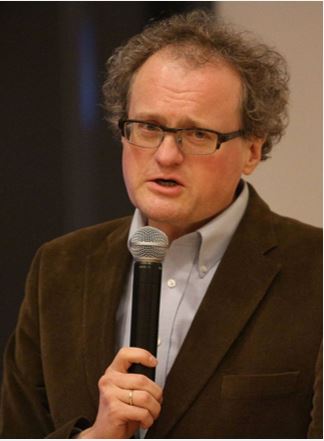
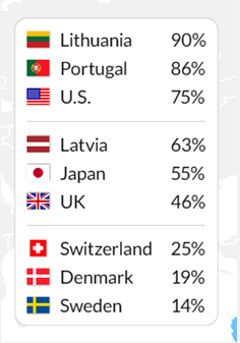
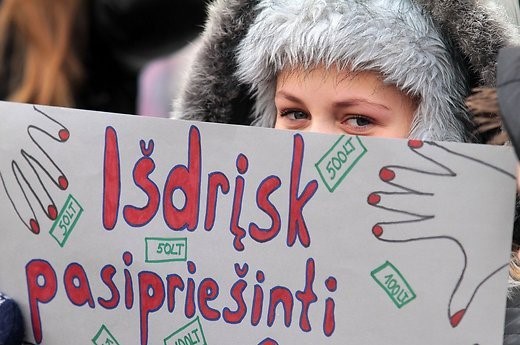


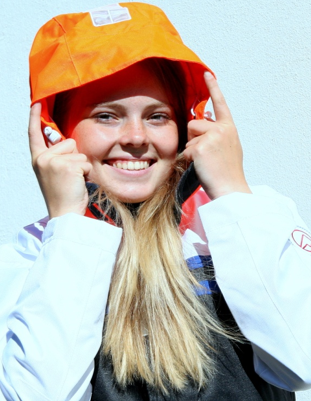
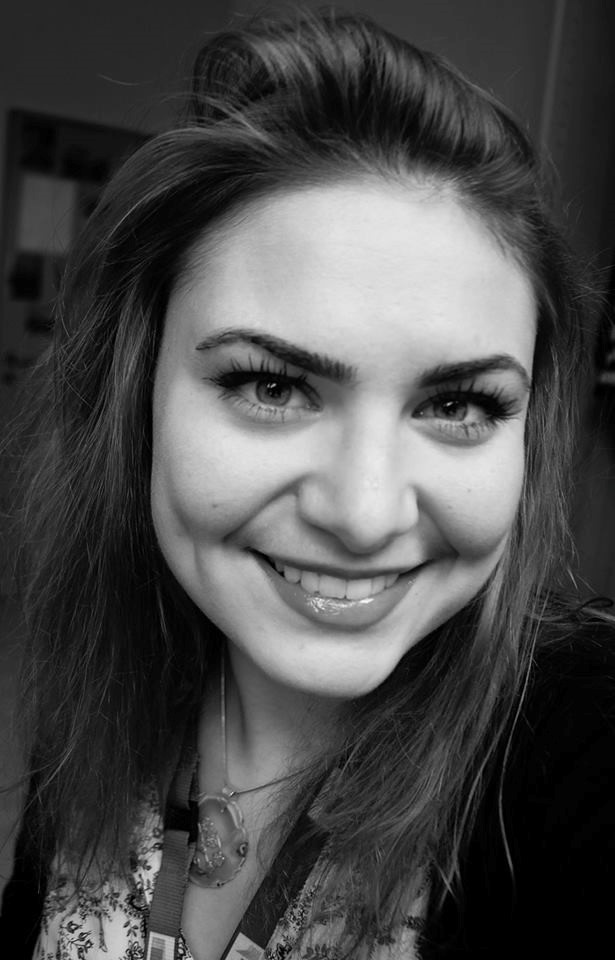
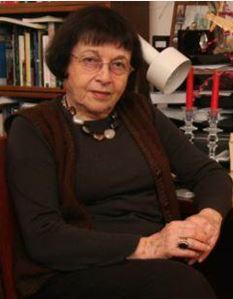
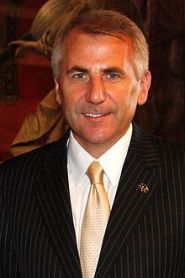
.jpg)
